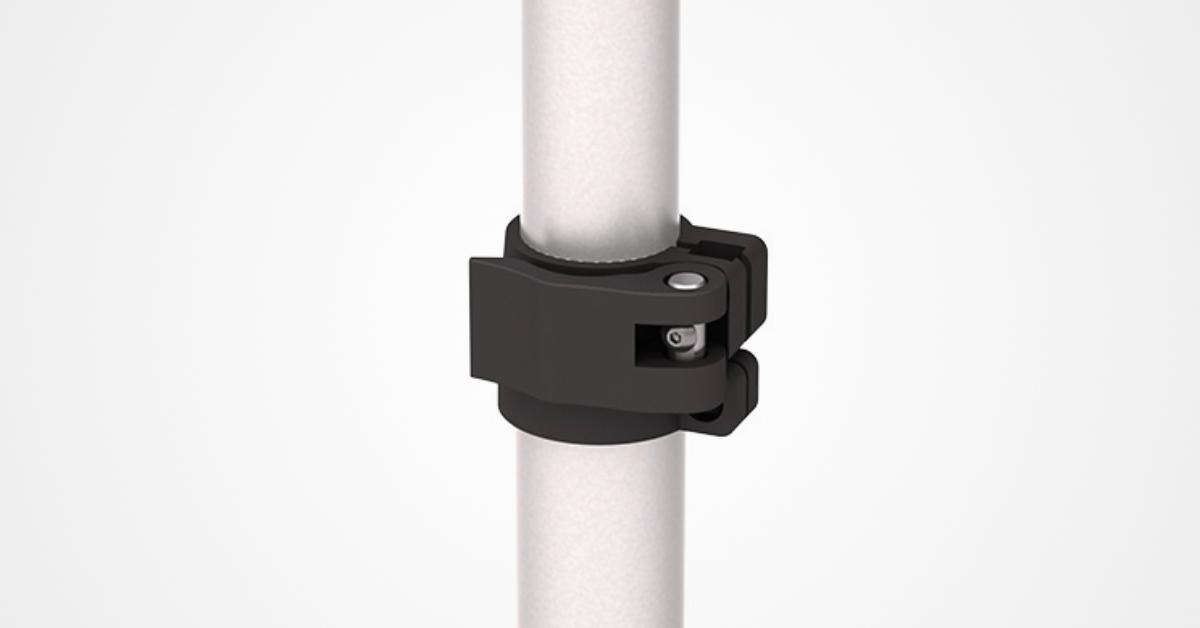Telescoping Tube Clamp can reduce the damaging impact of mechanical shock and heavy-duty vibrations common in fluid power systems. Tube clamps which can be adjusted the length of their nested tubing and gives full linear adjustment & locking without marring is the most ideal to use. Telescopic tube clamps must be designed to make your telescoping tubing system fast and easy to deploy.
Telescoping Tube clamp Features
Infinite Adjustability – A strict clamp-style linear mounting part that holds without harming the tube and gives endless adjustability. Quick-release handle to establish and lock a position, telescoping tube clamp has to ideally suited for applications that require frequent repositioning.
All Sizes – The clamps has to available in various lengths and widths to fit a variety of hose and tube diameters for the specific needs.
Accessories -Telescoping tube clamps must offer an adjustable screw to gain the perfect fit for the sliding tube and a clamping lever that allows for quick adjustment of pole length. Telescopic tube screw has been widely used in many applications that make it possible for for a secure and perfect fit. The small gap between inner and outer telescoping tubes allows them to rotate each other, in such cases it is necessary to be screw.
Telescoping Tube Clamp – How to assembly
Telescoping tube clamp must be adjusted for smooth operation and maximum clamp holding power. To adjust for best performance, lift lever to maximum position and tighten screw just enough so that sliding tube moves freely. This will ensure maximum holding power when lever is fully low-ered. Here are the general step-by-step guide how to assembly:
Dry fit and sanding
Start by preparing tube end and telescopic tube clamp by lightly sanding. Dry fit larger diameter end of tube clamp on tube and apply masking tape to protect all but the area to be bonded. Sand both tube end and inside of tube clamp (larger di-ameter end). After sanding, use a rag to clean tube end and tube clamp.
Mix & Apply epoxy
Mix together epoxy adhesive according to manufactures instructions. Add microspheres to epoxy mix, 10% by weight (I.E. 0.3g microspheres per 3g of epoxy) and mix thoroughly.
Evenly apply epoxy to both tube end and inside of larger diameter end of tube clamp and fit clamp over end of tube. Be careful not to get any adhesive on smaller diameter end of clamp as this is the end that will accept sliding tube that is adjustable.
Clean up & cure
Clean both inside and outside of the telescoping tube clamp using a rag lightly soaked with isopropyl alcohol, acetone, or mek. Remove masking tape and apply additional masking tape over end of clamp to securely hold to end of tube. Allow bond to cure. At room temperature (75 degrees f), adhesive will cure overnight. Faster cures are obtained using elevated temperatures. Refer to the tech sheet for scotch-weld ep-oxy 2216b/a gray for further information.
Bond end stop to tube
End stops prevent telescoping tube from coming apart when fully extended. If you have purchased end stops for your tubes, they will need to be bonded to the end of the tubes. Start by lightly sanding end of tube and inside of tube stop. Next, apply adhesive to the inner surface of stop and outside of tube. Slide stop over end of tube and align with end of tube. Remove any excess adhesive with cleaning rag. Allow to fully cure before inserting into tube clamp.
Once bond has cured for telescopic tube clamp and optional tube stop, the two tubes can be joined. Slide smaller tube into smaller end of tube clamp. If tube stop was used, tube must be joined through larger diameter tube. For multi-section telescoping tube assemblies where tube stops are used, each sliding tube will need to be joined.
Telescoping tube clamp are designed to satisfy virtually all potential telescoping tubing needs through largest tube end before next tube clamp is bonded.
Tips to Help You Pick The Best Telescoping Tube Clamp For Your Project
Telescoping tube clamps are essential components of many metalworking projects. Whether you’re creating a simple frame, an intricate structure, or even a large sculpture, these adjustable clamps are essential for holding the pieces together.
But with so many different types, sizes, and materials available, how do you choose the right one? Here are a few tips to help you pick the best telescoping tube clamp for your project:
1. Consider the size of your tubes.
Telescoping tube clamps come in various sizes, so make sure to measure the diameter of your tubes before purchasing. If your tubes are slightly different in size, you may need to purchase clamps that are slightly larger than the tubes themselves.
2. Look for adjustable clamps.
While some clamps are made of rigid metal, adjustable clamps can be tightened or loosened as needed for a more secure fit. This is especially helpful when working with curved or irregularly shaped tubes.
3. Consider the material.
Many clamps are made of aluminum, but stainless steel clamps are more durable and corrosion-resistant. If you plan to use the clamps outdoors, stainless steel may be a better option.
4. Think about the finish.
Some clamps come with a protective coating that can help prevent corrosion. Others come with a matte finish that gives them a more professional look. Choose the finish that best suits your project.
Choosing the right telescoping tube clamp for your project isn’t always easy, but following these tips can help you make the right choice for your needs. With the right clamp, you’ll be able to create a strong, secure frame or structure that will last for years to come.
